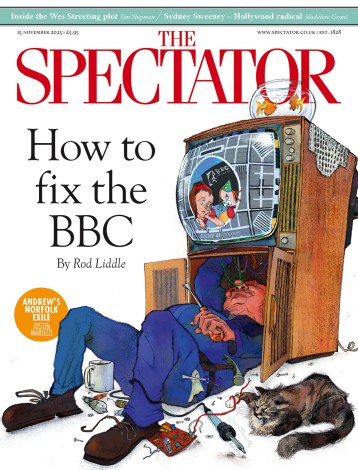NHS workers used to enjoy hearty backslaps for their ‘jolly hard work’ to bring down accident & emergency waiting times. Such praise was delivered by the Labour government’s chief nursing officer at a conference I covered back in 2003. Back then, talk was of shrinking queues rather than impending ‘A&E crisis’. Nurses should congratulate themselves, she beamed, for helping speed patients through casualty in fewer than four hours.
This apparent success was just the beginning, if this graph, circulated in a campaign e-mail by Labour’s shadow health secretary recently, is to be believed:

‘This is what three years of David Cameron running the NHS looks like: a crisis in A&E,’ it rails. ‘Patients waiting in the back of ambulances and over 4,000 nurses lost. He has broken all of his promises on the NHS and patients are paying the price.’
This rhetoric of success sounds a bit hollow to me. As a former NHS worker, I witnessed first hand how waiting times were reduced under Labour. Months before attending the 2003 conference as a journalist, I worked in a leading London hospital during what is now known as ‘monitoring week’. These were the few days when A&E waits were officially recorded.
As an agency radiographer, I was offered extended hours to help slash vital minutes from waiting times for x-ray tests. And the whole hospital roll call appeared engage in a collective endeavour to hit the four-hour goal. Even the managers joined in, portering patients and blood samples. This week-long effort was effective in bending official figures to the government’s favour, as my audience with the chief nursing officer later proved. Backslaps all round and hail the workers!
This way of fixing the statistics was hardly a one off and not without its share of costs and casualties. It was ‘incentivised’ under Labour with fat financial rewards for hospitals which hit their goals- in an official sense, of course. And the tactics employed by managers to secure this coveted extra cash became notorious.
The British Medical Association found in 2005 that 48 pre cent of 163 A&Es had employed extra agency staff for one ‘period of measurement’ in 2004. A quarter had cancelled planned operations to help hit targets; a full fifth confessed to ‘direct manipulation of data’. More than 80 per cent of departments warned that patient safety was threatened by the target-hitting quest. Senior doctors were chastised for aiding patients with life-threatening conditions. Patients on the brink of breaching the four-hour rule were found beds before the seriously ill.
A larger study of the ‘national monitoring week’ by the Emergency Medical Journal, found that nurses, doctors and non-clinical staff had all seen their hours increased. Two-thirds of the 198 departments they surveyed made ‘special arrangements’ during the week their efforts became a matter of public record.
The BMA report concluded:
‘For many respondents it was not the target itself but the way the target was implemented, for example by bullying staff resulting in stress and poor morale.’
This fixing of figures not only created extra costs and casualties during the Labour administration, it also seriously undermines Burnham’s A&E grandstand. Casualty department’s waiting times during these manipulated monitoring weeks seem a poor indication of their real performance.
Labour should know better than making shonky use of statistics. Attacks on coalition ministers’ misuse of official figures have become a mainstay of its political campaigning success of late. Work and pensions secretary Iain Duncan Smith and Conservative chair Grant Shapps have been but two of its recent scalps. Both have been rebuked by the UK’s statistics watchdog for making misleading claims from official figures.
Perhaps now is the time for the Tories to take a leaf out of Labour’s campaigning compendium? The A&E waiting time stats brandished by Burnham certainly don’t appear to bear too much scrutiny. Not when you consider how they were fixed. How many other Labour claims to success are built on equally shaky ground? A more intelligent and honest approach to collecting and wielding statistics can only improve debates about health, welfare and other pressing issues.
Thankfully, the days of monitoring weeks have been put behind us. The coalition began collecting weekly rather than quarterly figures in 2010. These will hopefully provide a more accurate reflection of life on the ground in A+Es.
The passing of the misleading monitoring week should however be mourned. It was at least a useful barometer of workers’ willingness to push that extra mile. In 2003, there was no shortage of senior managers and professionals willing to heave-hoe heavy trolleys around the department where I worked. Although we cared about patients rather than targets, our hospitals were expanding rather than facing the axe. And Labour reaped the reward of this high-riding morale with a workforce willing to make it appear good.
This fuel of enthusiasm, so essential for glorifying government performance, is now likely to be in far shorter supply. With all this ominous talk of ‘restructuring’, the coalition could find itself with fewer willing friends in the NHS. Hitting targets is about more than just fixing figures. It’s about pushing trolleys too.
Keith Cooper is a freelance journalist, writer, researcher and acting news editor for the Local Government Chronicle.






Comments